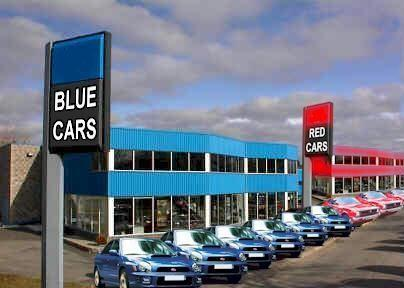 Red car, blue car, old car, new car. Does the color of your vehicle actually influence your auto insurance premiums? Not so much. It’s more about make and model, the safety features (and rating), security systems, and type of vehicle (SUV, sedan, sports car, truck, etc.).
Red car, blue car, old car, new car. Does the color of your vehicle actually influence your auto insurance premiums? Not so much. It’s more about make and model, the safety features (and rating), security systems, and type of vehicle (SUV, sedan, sports car, truck, etc.).
Everyone has their own preferences when it comes to selecting a vehicle to drive. If you live in the snow belt of the U.S., it’s probable that at least one vehicle in your driveway is four wheel or all-wheel drive. These types of vehicles can handle bad weather conditions better than standard front or rear wheel drive cars. On the other hand, if you’re in sunny Southern California, chances are that you’ll be driving a sportier car that is more in tune with dry road conditions.
An auto insurance myth that has been circulating for years is that if your car is red, regardless of the make or model, your auto insurance premiums will likely be greater. There’s not much truth to the myth, at least as far a color selection goes. And, there’s no statistical support showing that a red vehicle is more likely to be stopped for a driving violation than a similar blue car. Yet the rumors persist. Why?
Think about it. Generally speaking, a performance car is more likely to be brightly colored than, say, a Lincoln Town Car or Mercury Marquis. It’s the nature of sportiness. And it is a fact that a sports car will cost you more to insure for a variety of reasons, regardless of the color.
When setting insurance rates, auto insurers consider the make and model of car in rating your risk and setting the premium. And insurance companies figure that if you own a performance car, you didn’t buy it to putt around town. They assume you’re going to drive fast. The insurance underwriting logic goes like this: a fast car = speed = more accidents = higher insurance rates. Simple.
Another consideration is that a more expensive vehicle with a higher repair or replacement cost is going to be pricier to insure, right from the start. It doesn’t matter what make or model of vehicle – a new car is more likely to be stolen, vandalized, or targeted for a staged, insurance fraud scheme accident by a scam artist. A similar vehicle that’s a few years older will cost less to insure, simply because it’s not as attractive to thieves or scam artists who figure that you have deeper pockets if you’re driving a new vehicle.
Insurance companies know that the color of car you choose is simply a personal preference. But that personal preference might translate to you buying a make and model of vehicle that actually does cost more to insure. Think about that the next time you visit the local car lot.





